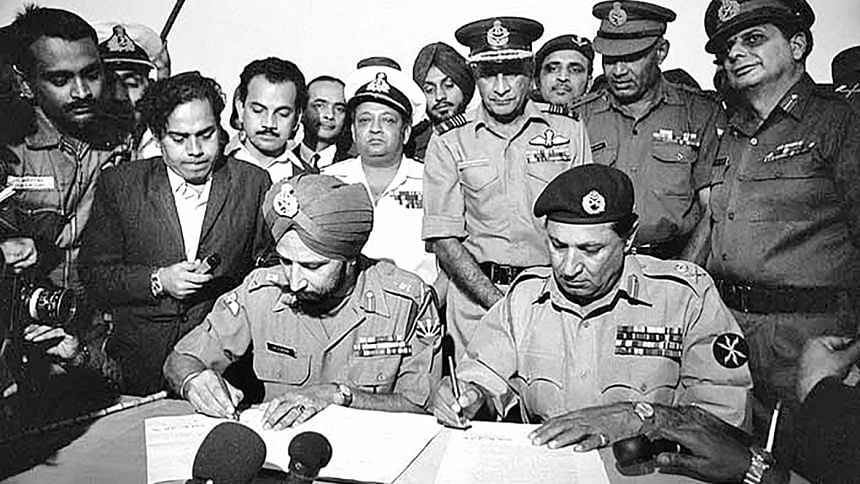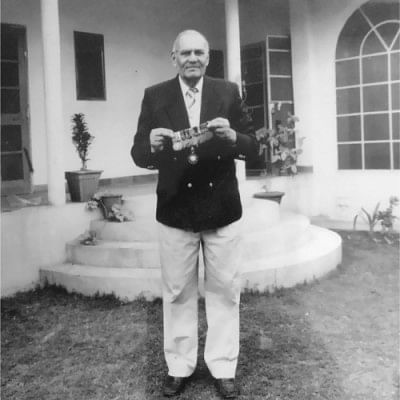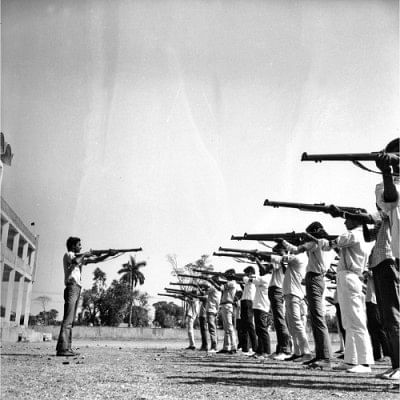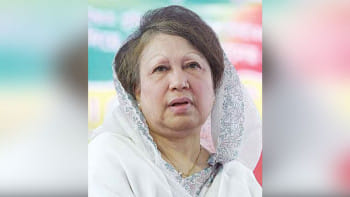Sagat Singh — An unsung hero

Forty-eight years ago, in the cold month of December, over 3,500 brave Indian soldiers captured 93,000 Pakistani prisoners who were made prisoners of war (POW) during the Liberation War in 1971, which ended the war in 14 days of a multi-front military engagement. A new nation was born after the valiant fight put up by the Freedom Fighters and Indian Army at the cost of much bloodshed.
Lt Gen Sagat Singh was an unknown hero of that war who was instrumental in the fall of Dhaka. Lt Gen Sagat Singh was the General Officer Commanding of Tezpur (Assam) based 4 Corps and it was he who despite getting injured by the machine-gun fire successfully conducted the daring hitherto unknown night-time heliborne operations over the rivers and the treacherous terrain which made the fall of Dhaka so quickly and decisively leading to the historic surrender of the 93,000 Pakistani soldiers at the Dhaka Race Course. The year 2019 is his birth anniversary year and befittingly, the late Lt General was honoured by the Indian army who erected busts in his memory in his native state’s two cities, Jaipur and Jodhpur. He passed away in 2001.
The Indian Army has given the country a number of generals. Many generals left an indelible impression due to their best strategy in the war, so many generals led their soldiers on the battlefield with their shoulders. One such officer was Lieutenant General Sagat Singh on whose head the Portugal government had announced a reward of ten thousand dollars. General Sagat Singh, played an important role in freeing Goa, from the Portuguese and it became a part of India.
After the surrender, the Indian Army found a dossier on Lt Gen Sagat Singh prepared by the Pakistani Army which mentioned that Sagat Singh is the Indian general who should be feared most as he had never lost any battle against any enemy anywhere. What a tribute from an enemy!
“Lt Gen Sagat joined the army as a sepoy kin the erstwhile Indian princely state of Bikaner and rose to become a Lt General. He was a born hero and it seemed his whole life was geared to leading a Corps into battle. In 1971, in a major logistic achievement, he moved and staged his Corps at Agartala. When operations commenced, his Corps relentlessly attacked and defeated the Pakistani forces, crossed river lines and terrain considered impossible is an innovative use of helicopters has never been repeated. His is the only example in the Indian army history. His knowledge of the operational art was perhaps without parallel. He can be compared with the best of Generals of both the first and the second world wars.” Said his contemporary Maj General (retired) Randhir Sinh, who authored a book on him. During the Liberation War Randhir Sinh was the ADC to Lt Gen Sagat Singh.
Randhir Singh described the Pakistani General AA Khan Niazi as a coward, vulgar and unskilled general incapable of handling his forces.

Maj Gen (retd) Randhir Singh is of the opinion that the controversy relating to the surrender at Dhaka’s Race Course in December 1971 was unfounded. They were of the opinion that the media wrongly painted a picture that Gen Sagat should have taken the surrender as the field commander. They said the Bangladesh operation was a combined effort of army, navy and air force and Gen Jagjit Singh Aurora, as the GOC in Eastern command, was fully authorised to take the surrender.
“You have to look at the document of surrender, it states that Gen Aurora from the Indian side will take the surrender of the Pakistani forces from the commander of the Pak forces Gen A.A. Niazi, Thus as a signatory to the surrender, Gen Aurora was only authorized to take the surrender.” Said another Lt Gen (Retd) Shamsher Mehta.
After the instrument of surrender signed on December 16,1971 Indira Gandhi visited Dhaka and profusely thanked Gen Sagat Singh, a six -footer and saw to it that he stayed in Dhaka to assist the Sheikh Mujibur Rahman government.
Col (Retired) Ran Vijay Singh, his son described how his father always led from the front and, no matter how difficult a mission was, carried the under-command with him, how even as a very senior commander, he exposed himself routinely to danger, how he narrowly escaped death many times at many places, how he went beyond the call of duty and achieved the “task plus” by capturing Dhaka in a very unique way. Ran Vijay admitted that his father differed in tactics and strategy with the higher command, and mentioned how courageously he lived his life. He said the heli-borne operation that he undertook over river Meghna was his own strategy that was helped by Air Vice Marshal Chandan Singh of the Indian Air Force.
In March 2013, the Government of Bangladesh invited and honoured Ran Vijay Singh and Damyanti, his wife, to Dhaka to pay tribute to his father, General Sagat Singh, the liberator of Bangladesh. A thoughtful gesture from a grateful nation.
Once Field Marshal Sam Manekshaw said: “If a man says he is not afraid of dying, he is either lying or he is a Gurkha.” I might add: or a Sagat Singh.

The year 1961 may well be termed as the beginning of the ‘Great Decade’ for him, culminating into the high-point of the Liberation of Bangladesh in 1971. In between Goa and Bangladesh, came two other high-water marks: whipping the Chinese in Sikkim and successfully dealing with the Mizo insurgency.
Randhir Sinh’s book, “A Talent for War: The Military Biography of Lt Gen Sagat Singh describes in details the Dhaka operations”. The soldier-scholar late Lieutenant General SK Sinha, who later became the Governor of Jammu& Kashmir in his foreword for the book has the following to say:
After the war, when Gen Sagat was superseded and his junior, Lt Gen KK Singh, was made his boss, Gen Sinha said, “... I considered it very unfortunate that the higher-ups should treat a war hero who had done so much for the country in such an unfair and unjust manner.” On Sagat’s death, Lt Gen KK Singh pays him the ultimate tribute: “... a great General who had become a legend in his lifetime. India will not see the likes of Sagat Singh again.”
After his retirement from the army he settled down in the Indian province of Rajasthan’s capital Jaipur where he built a farm house which was aptly called Meghna after the river over which he undertook the heli-born operations. He also named his granddaughter Meghna.
Prakash Bhandari is a veteran Indian journalist, formerly with The Times of India.

 For all latest news, follow The Daily Star's Google News channel.
For all latest news, follow The Daily Star's Google News channel. 



Comments